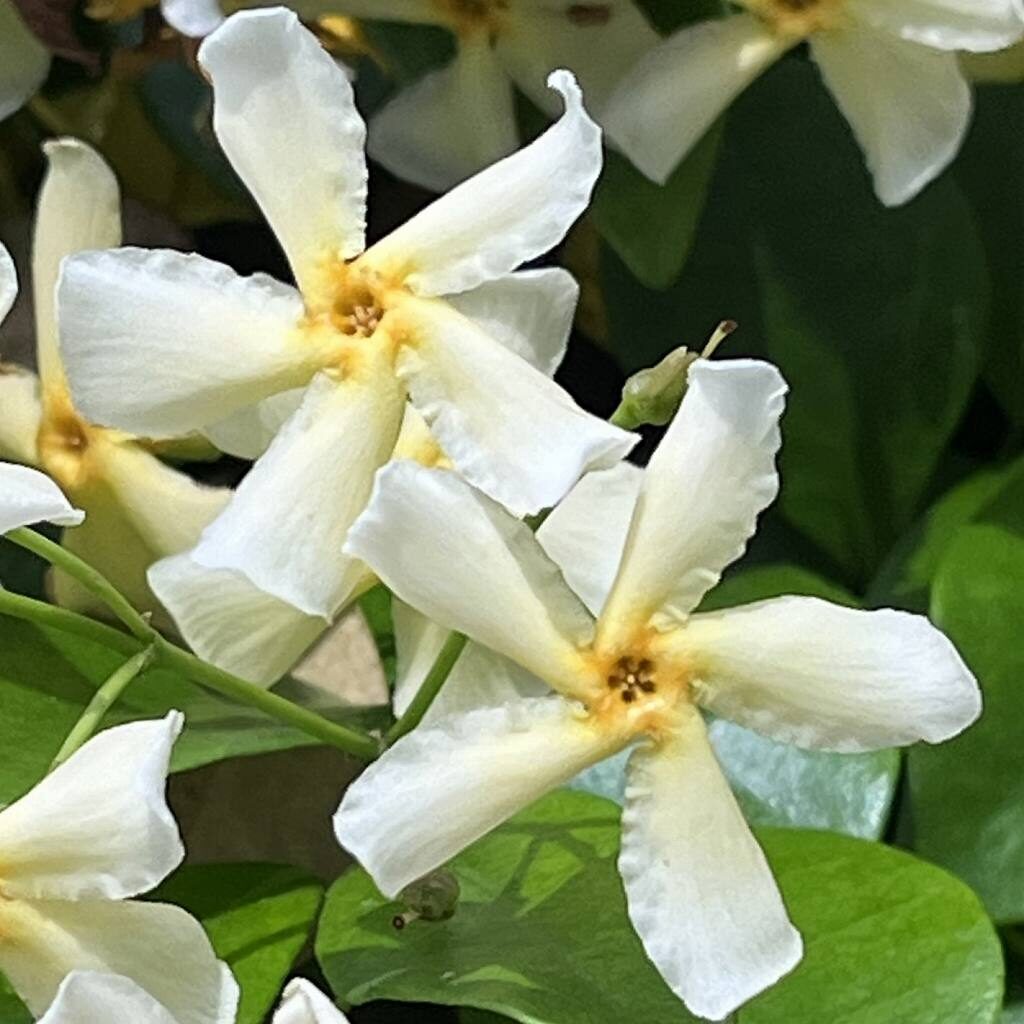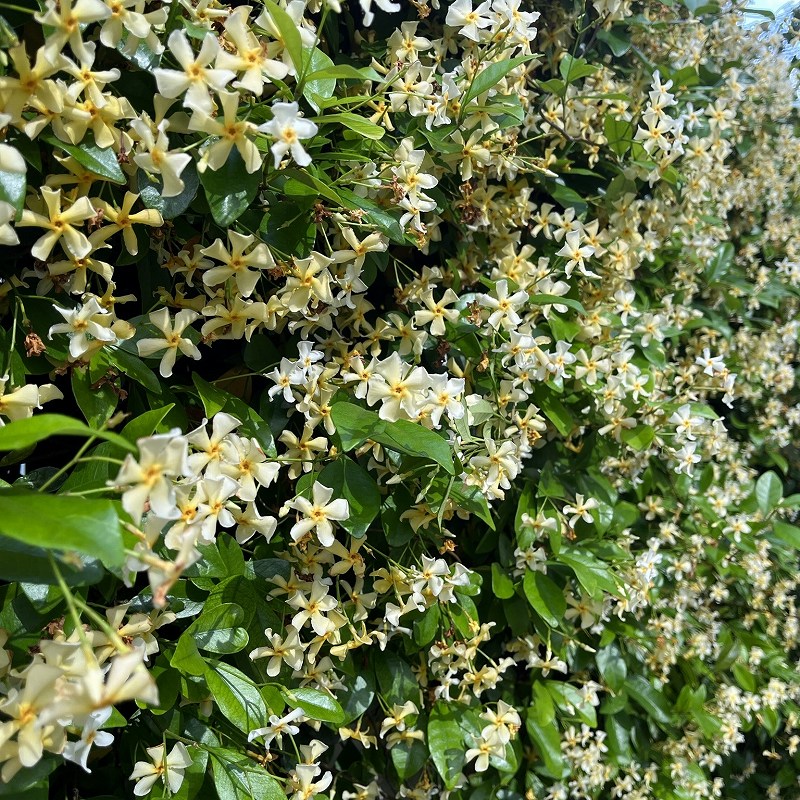テイカカズラの花は捻じれながら5つに裂け、咲き始めが白色、咲き終わりが淡黄色。強い芳香を放つので「蔓梔子」という別名もあります。
The flower of asiatic Jasmine splits into five and are twisted, with white at the beginning of bloom and pale yellow at the end of bloom. It gives off a strong fragrance, so it is also known as “vine gardenia”.
【仮名】テイカカズラ
【和名】定家葛
【英名】Asiatic Jasmine, Japanese Star Jasmine
【学名】Trachelospermum asiaticum
【誕生】06/ 11
【開花】05, 06月
【花色】White, Yellow



テイカカズラ
テイカカズラの生態
テイカカズラはキョウチクトウ科の蔓性常緑低木です。日本では本州、四国、九州に、国外では朝鮮半島に分布。森林内では地面を這うように蔓を広げ、高い木に絡むと付着根で這い上がります。古くから親しまれ、12~13世紀の随筆家で「方丈記」を著した鴨長明も庵の周りに植栽。
テイカカズラの名前
テイカカズラの名前の由来は、12~13世紀の歌人で「小倉百人一首」の撰者でもある藤原定家です。古くは「真拆葛」と呼ばれましたが、庭の下の方で蔓を這わせて花を咲かせることから「庭下葛」と呼ばれるように。それが後の逸話によって「定家葛」と書かれるようになりました。
テイカカズラの花
テイカカズラの花は5つに裂け、風車の羽根のように捻じれながら咲きます。花は咲き始めが白色、咲き終わりが淡黄色。強い芳香を放つので「蔓梔子」という別名もあります。花後は弓なりの細長い袋果が吊り下がり、熟すと裂開。中の種子が白い綿毛で風に乗り、飛んでいきます。
テイカカズラの毒性
テイカカズラには毒性があります。蔓や葉柄を傷つけると白い乳液が出ますが、有毒成分のトラチェロシドを含むため、触れると皮膚がかぶれることも。以前は「絡石」という生薬で解熱、鎮痛、強壮に用いられましたが、嘔吐、下痢、腹痛を引き起こすため、現在は用いられません。
テイカカズラの逸話
ある僧侶が女に請われて墓所に案内されます。そこで「藤原定家の慕う式子内親王が亡くなり、定家の想いが葛となってこの墓に絡みつき、内親王を苦しめている」と聞き、僧侶が読経。実は内親王の霊だったその女が成仏する一方、その葛は「定家葛」と呼ばれるようになりました。
Asiatic Jasmine
Asiatic jasmine is a vine evergreen shrub of the family Apocynaceae. It is distributed in Honshu, Shikoku, and Kyushu in Japan, and in the Korean Peninsula overseas. In the forest, the vines spread like crawling on the ground, and when entwined with tall trees, they crawl up with attached roots. Kamo no Chomei, a writer of the 12th and 13th centuries who wrote “Hojoki”, has been planted around the hermitage.
The origin of the name of asiatic jasmine is the Fujiwara Teika, a poet of the 12th to 13th centuries who was also the creator of “Ogura Hyakunin Isshu”. In the olden days, it was called “Masaki No Kazura”, but it is called “Teika Kazura: under the garden vine” because the vines crawl in the lower part of the garden and the flowers bloom. It came to be written as “Teika Kazura” in a later anecdote.
The flower of asiatic Jasmine splits into five and are twisted like the wings of a windmill. The flowers are white at the beginning of blooming and pale yellow at the end of blooming. It gives off a strong fragrance, so it is also known as “vine gardenia”. After the flower, a long and narrow sack fruit with a bow hangs, and when it ripens, it dehisces. The seeds inside are white fluff and ride on the wind and fly away.
Asiatic jasmine is toxic. If you damage the vines or foliage, a white milky lotion will come out, but since it contains the toxic component tracelloside, it may cause skin irritation when touched. Previously, it was used as a herbal medicine called “Rakuseki” for fever reduction, pain relief, and tonicity, but it is no longer used because it causes vomiting, diarrhea, and abdominal pain.
A monk was asked by a woman to be guided to the graveyard. There, she told the story, “Fujiwara Teika loved Shikishi Naishinou, but Naishinou died. He loved her so much that he became a vine and entwined in her grave. So she has been suffering.” The monk chanted the sutra, then the woman who was the spirit of Naishinou became a Buddhahood, the vine came to be called “Teika Kazura”.


